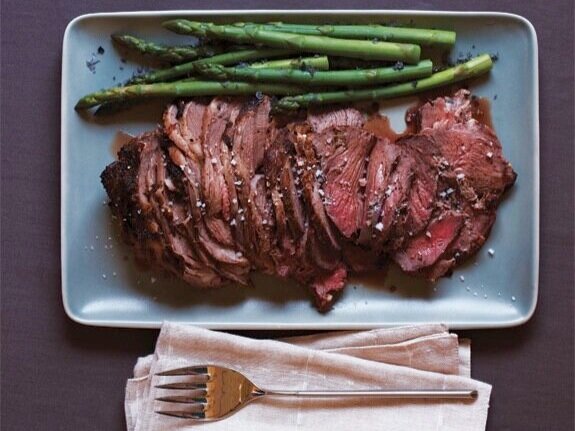Selmelier Mark Bitterman Assembles an Artisanal Salt Kit to Amp Up Your Food
From the archives of eatTV, our James Beard-award winning food video showcase, check out our video into the world of artisanal salt.
Mark Bitterman, a self-proclaimed Selmelier, is more than a little bit obsessed with salt. Step into The Meadow, his jewel-box of a store in the West Village of Manhattan (or the original location in Portland, Oregon) and be taken on a journey to the bottom of lakes and seas, across mountains and salt flats, and through deserts on camelback to explore the vastly wide—and largely unknown—world of salt.
To many, salt is just that thing you add to your food for, well, saltiness. It’s salt, so it’s one thing, right? Not exactly. What we call table salt is a chemical compound made mostly of sodium chloride. But natural sea salts are actually made up of over 85 different minerals, each with unique characteristics and uses.
“We all think of salt as a four letter word you find on the bottom of a supermarket shelf, it’s just white and homogenous and has no character,” says Bitterman. “But in reality salt has extraordinarily distinct characteristics depending on where it’s made and how it’s made, what culinary tradition it comes from.”
The Meadow carries a whopping 120 artisanal varieties of salt, from exotic sea salts from Malaysia to rock salts dug out of mountains in Pakistan, to Djibouti Boule, perfectly smooth balls formed from salt crystals that roll around the bottom of Lake Assal. Bitterman likes to keep a few in his pocket, which he calls a “therapeutic and decaffeinated way to keep the mind aglow.”
Every salt in the store has a story—from its unique mineral properties to how the locals harvest it, to how it feels and tastes—and Bitterman is all too keen to tell them, with that sparkle in his blue eyes and his giddy giggle that comes when he talks about what he loves.
Here’s how he describes Jurassic Salt: “Moistureless, rock-hard, symmetrical as camphor pellets, Jurassic salt crystals lean into your mouth like a bear scratching its haunches on a tree—and with the same disconcerting tendency for unwanted friendliness, the flavor taking on a mildness on the back of the tongue and refusing to leave.”
Persian Blue, a rock salt studded with brilliant blue flecks is told like this “sprinkled over Champagne from an amulet in a swishy nightclub in Moscow, Persian blue salt is a culinary bauble: rare, beautiful, and gracefully useless.”
With such stunning texture, color, and shape accompanied by stories like these, you can’t help but be excited by these artisanal salts. The descriptions above come from his James Beard Award-winning book, Salted, which he fittingly subtitles a “Manifesto.” The book is both a love letter to and an encyclopedia of all things salt. There’s more in this tome than you could ever imagine about salt, more than maybe you even want to know about salt. My advice is pay attention to this man. Your food will look, and taste, better.
““By using better salt you up the baseline integrity of everything in your kitchen… A natural salt with lots of minerals, lots of characteristics can really punch up the flavor of your food.””
““The idea behind using good salts is that this is a fundamental ingredient that seasons everything you cook,” says Bitterman.”
You may not be quite ready to take on 120 salts now, but Bitterman asserts that making just a few changes to your salting habits can dramatically alter your cooking.
We make it easy: in this food video, the Selmelier does the work for you, assembling a Toolbox of Salt. Buy these four types of salt—Sel Gris,Fleur De Sel, Flake Salt, and Infused Salt—and your food will, well, rock.
Photos by: Mark Bitterman, Jennifer Martine, eatTV.com









